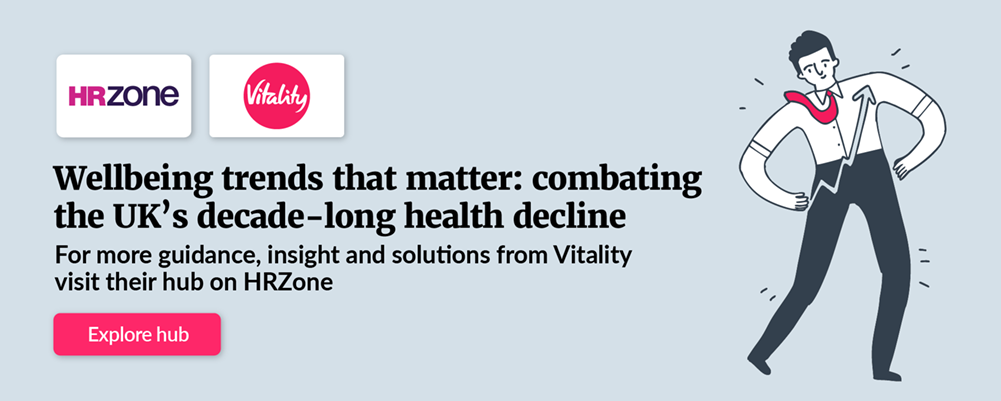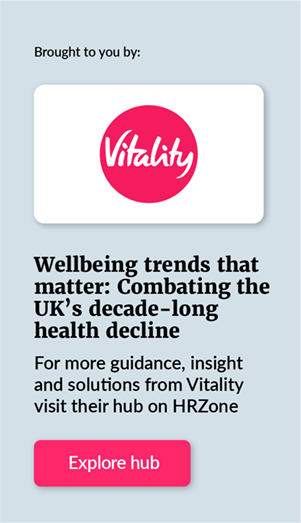Over the past decade, the UK has faced productivity challenges due to the pandemic, staff shortages, changing work styles and the cost-of-living crisis. Health and wellbeing issues have been particularly impactful, with around nine million people economically inactive between July and September 2024.
Vitality’s Britain’s Healthiest Workplace 10-year report shows a clear link between health risks and productivity losses. In 2023:
- Employees at risk of depression lost 153% more productive time
- Employees experiencing burnout lost 121% more
- Physically inactive employees lost 29% more
- Employees with unhealthy diets lost 15% more
This resulted in employers losing about 20% of their total wage bill each year due to health and wellbeing issues.
Additionally, our research found that healthier employees were up to 49 days more productive. This shows that investing in employee health and wellbeing can significantly boost your organisation’s productivity and help create a more resilient workforce.
With that in mind, here are three ways for employers to improve productivity in the workplace.
1. Prioritise your employees mental and physical health
As mentioned, our study revealed that employees with better health can be up to 49 days more productive. Investing in employee health and wellbeing is therefore a business priority.
Tips for employers:
- Support mental health: Set up employee assistance programmes (EAPs) and make counselling services available
- Promote physical health: Encourage regular exercise, offer healthy food options and provide ergonomic workstations
2. Adapt to a shifting work environment
Flexible, remote, and hybrid working patterns have become the norm in recent years. The impact on health and productivity varies widely, as our decade of data shows. Different age groups adapt differently, with some employees handling the changes better than others. This mix of preferences underscores the need for more tailored approaches to support employee wellbeing.
Tips for employers:
- Offer flexible working options: Let employees choose their work hours and locations to better balance work and personal life
- Provide the right tools and training: Make sure employees have the technology and skills they need to work efficiently from anywhere
3. Address generational differences
Productivity levels also vary across generations. Younger employees (under 35) are losing more productive time due to higher risks of mental ill-health and financial concerns. Meanwhile, older employees (50+) lose the least productive time, on average, despite physical health challenges. And the sandwich generation (35-50) faces increased mental health risks and financial concerns due to caring responsibilities.
Tips for employers:
- Support younger employees: Offer financial wellness programs and mental health resources tailored to their needs
- Assist the ‘sandwich generation’: Provide flexible working arrangements and resources for managing caregiving responsibilities
- Promote intergenerational collaboration: Encourage mentorship programmes where older employees can share their experiences and younger employees can bring fresh perspectives








